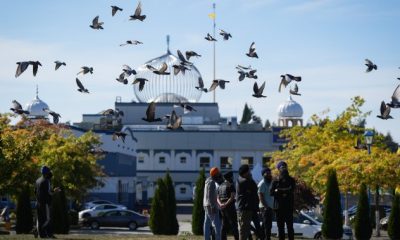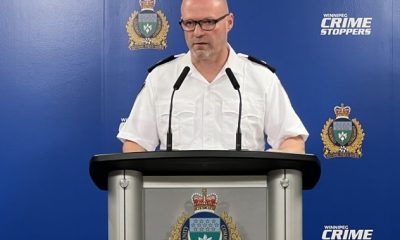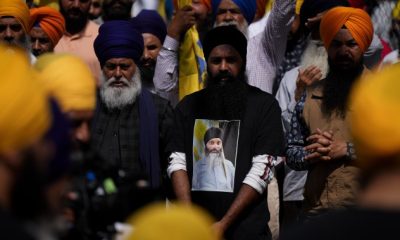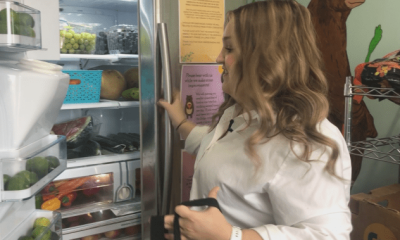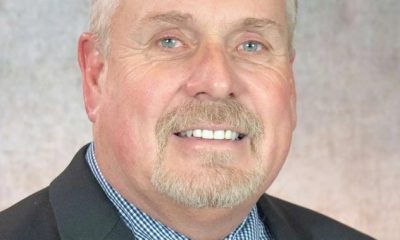General News
Residential school denialism mounts, why the search for unmarked graves needs time
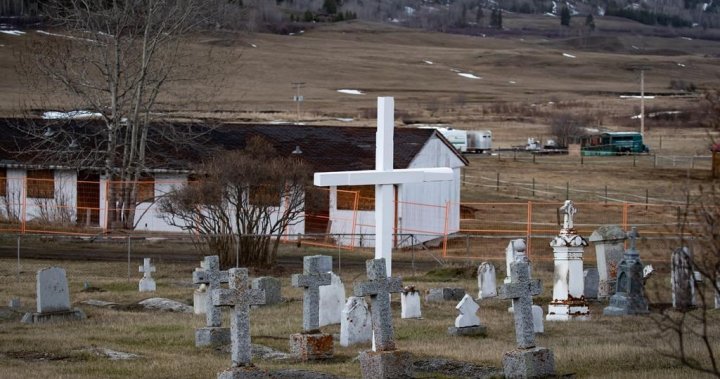
WARNING: This story contains details that may be disturbing to some readers.
Indigenous communities continue to search for unmarked graves at the sites of former Indian residential schools. This is going to take time and communities are navigating that process carefully.
But as searches continue, so does the rise in residential school denialism that’s plaguing many survivors, their families and communities.
“People are jumping the fence at night with shovels (at former Kamloops Indian Residential School) and not to prove the presence of these remains, but to prove that absence,” said Whitney Spearing, archaeologist, and lead investigator into St. Joseph’s Mission with Williams Lake First Nation.
“I just can’t fathom anybody actually doing that, but it is a huge part of this denialism and the mockumentary-style information that’s coming out.” .

Researchers and historians say a big part of combatting denialism is education. “We need to get to a place where identifying and challenging denialist talking points for Canadians in their daily lives (is easy),” said Sean Carleton, historian and Indigenous studies scholar at the University of Manitoba.
“Non-Indigenous people taking on that work then allows survivors to tell their truths without having to be constantly on guard or deal with the kind of increasingly violent responses that they are getting.”
An important part of that education piece is understanding why community-led searches for unmarked graves take time. And one of the communities that’s put a great deal of thought into their process is Williams Lake First Nation.
Announcements made, what’s next for St. Joseph’s Mission?
“No, we haven’t excavated or exhumed these anomalies or these graves,” said Chief Willie Sellars of Williams Lake First Nation.
“But one thing that we can say, you know, when you’re looking at how we confirm that history is the continued stories that we hear from our elders and our survivors.”
Williams Lake has made two announcements so far; the first in January 2022 revealing 93 reflections, and the second in January 2023 revealing 66 reflections.
The community has a dedicated team investigating the former St. Joseph’s Mission and is very conscious of the severity and importance of the process.
“We definitely have to be very respectful in regard to the different (First Nations) that are impacted,” added Sellars.

The Nation is currently working on a memorandum of understanding with the province and the coroner’s service around next steps so they are able to lead the process. And while excavation and exhumation are both on the table, they won’t happen anytime soon.
“It’s not something that we can rush or we can really push the envelope on, but it’s going to take time,” said Chief Sellars. “The plan is to go to a space where we are confirming anomalies or reflections that we’ve been able to identify.”
“There is no massive rush, in our opinion, it’s making sure that we’re doing it as safely as possible.”
The area around St. Joseph’s Mission that needs to be searched is vast – at least 780 hectares – and so far only 34 hectares have been scanned.
“I can’t say with precision that there are graves there because we would never know until we exhume or excavate,” he said. “But I mean, based on the research and the interviews that we’ve done today, they are there.”
The path from ground-penetrating radar to exhumation
With hundreds more hectares to survey – mostly on privately owned land – Williams Lake First Nation has a lot of work ahead of them and says a phased approach is best.
“One of the keys to moving forward is having access and having the ability to do the work on the ground,” said Spearing.
They’re looking into the possibility of using drone-based ground-penetrating radar which would speed up their collection time as the drone can do 22 hectares in a day. Spearing said that while the collection is quick, processing time would still be the same.
“We have not done any invasive testing on site, but once we’re finished with the non-invasive, like the ground-penetrating radar … we will move to intrusive testing in terms of like environmental DNA testing,” she said. “There may be potential to do some X-ray fluorescence testing on vegetation that’s close by to clandestine graves, not necessarily intrusive, but also bringing out human remains detection dogs.”
“So those are kind of the next tools in the toolbox that we’ll exhaust before we really get to anything invasive.”

And just because this is Williams Lake First Nation’s plan, doesn’t mean it’s how other communities are going to conduct their searches.
Some will use ground-penetrating radar, survivor testimony and research, others will just use survivor testimony and many won’t get to the point of exhumation or excavation. Spearing said that’s OK because it should be up to the individual community how they plan on conducting their search.
“(For us) all signs point to excavation and of course, there’s huge amounts of community involvement and engagement that needs to be done. I cannot say that enough,” she said.
“There will be no shovels in the ground until we’ve done all of that engagement prior.”
The insidious nature of Indian residential school denialism
“Denialism is actually a much longer phenomenon, we think of it as new but church and state officials have been downplaying and questioning Indigenous communities, survivors, for over 100 years,” said Carleton.
Years ago, the Truth and Reconciliation Commission laid out – based on church and state records – that at least 4,000 children died while attending Indian residential schools.
“These things are not up for debate anymore. What denialists are trying to do is undermine all of that work,” he said. “Denialism is a false refuge; it actually keeps Canada stuck in a colonial cul-de-sac that is not going to strengthen relations.”
“What denialists know is that if you can obscure the truth, then you don’t have to do the healing and the justice and the reconciliation part.”

Current searches are being conducted because communities want to; the searches will be done at their own pace.
“Indigenous communities don’t owe Canadians the bodies of their children,” said Carleton. “They’re undertaking this research for themselves to facilitate community healing, this isn’t about showing Canadians the proof of genocide that’s already been done.”
“There will never be enough to satisfy denialists, so what we need to do is cut off their oxygen, allow them less room to maneuver so that when they raise these talking points it’s seen as the ridiculous misinformation that it is and that people will be like, ‘No, I’m not publishing that op ed.’ ‘No, I’m not listening to that at the dinner table.’”
The Indian Residential Schools Crisis Line (1-866-925-4419) is available 24 hours a day for anyone experiencing pain or distress as a result of their residential school experience.
Disclaimer: No copyright infringement intended. All rights and credits reserved to respective owner(s).



